Do you have a question about the Samsung RS263BBSH and is the answer not in the manual?
Displays symbols indicating danger or risk of injury and material damage.
Explains the meaning of various caution and warning symbols used in the manual.
An overview of the key characteristics of the newly developed refrigerator.
Detailed technical specifications for electrical, performance, and refrigeration systems.
Compares product specifications across different models and brands.
Provides a detailed specification chart comparing various Samsung refrigerator models.
Details the path of the refrigerant through the refrigeration system.
Illustrates the airflow patterns within the freezer and refrigerator compartments.
Explains the layout and functions of the refrigerator's digital control panel.
Details how to adjust and manage temperature settings for freezer and refrigerator compartments.
Describes the functions for rapid cooling and freezing operations.
Details the operation of the ice and water dispensing system.
Details the operation of the CoolSelect Zone drawer for specific temperature modes.
Describes the ice production process, parts, and initial operation.
Explains how the defrost cycle is determined and controlled.
Provides step-by-step instructions for the proper installation of the refrigerator.
Explains modes for pull-down, defrost cycles, and cancellation procedures.
Explains how to perform and interpret self-diagnostics tests for troubleshooting.
Describes how to check the operational status of various components via the display panel.
Troubleshooting steps for when the refrigerator does not power on.
Troubleshooting steps for compressor and fan motor operational issues.
Troubleshooting steps for problems related to the defrost function.
Troubleshooting steps when self-diagnosis indicates an error.
Troubleshooting steps for issues with the panel PCB or display.
Troubleshooting guide for non-operational fan motors.
Procedures for checking the failure of relays and SSRs.
Method for checking the resistance of various loads to identify faults.
Procedure for checking sensor resistances and connections.
Steps to check the functionality of door switches and their impact on lamps and sensors.
| Type | Side-by-Side |
|---|---|
| Refrigerator Capacity | 16.5 cu. ft. |
| Cooling System | Frost Free |
| Ice Maker | Yes |
| Water Dispenser | Yes |
| Energy Star Rated | Yes |
| Color | Black |
| Height | 69.875 inches |
| Width | 35.75 inches |
| Defrost Type | Automatic |
| Depth | 33.625 inches |


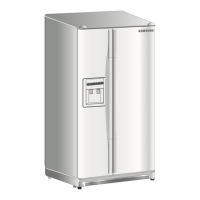
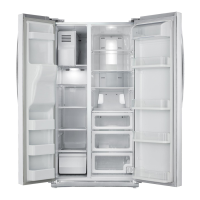
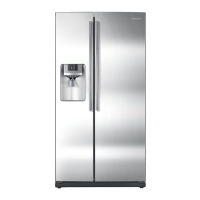



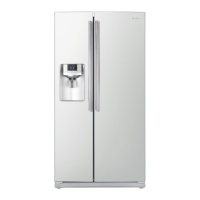
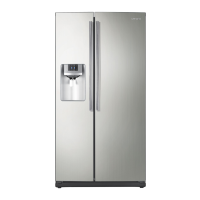


